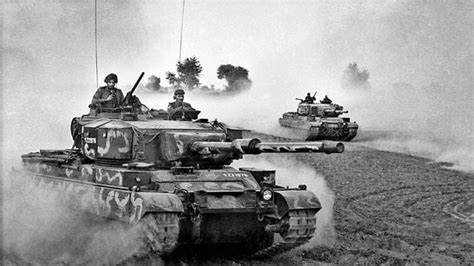Article first published in Daily Times on 12-Dec-2021. Article being published on https://aswidevision.com/ with the consent of writer.
Indian chronicle 2020 has well-established how India is pursuing its agenda of hegemonic designs through propaganda and proxy wars. India is fueling terrorism in the region through its subversive activities. However, the Indian quest for hegemony is not new as the history of its sinister designs and the urge for domination goes back to the 1970s. Back then, Indians were burning to avenge the defeat of 1965. They had prepared a plan, which was a mix of conventional attacks, terrorism, and propaganda in their neighbouring East Pakistan, which was 2207 kilometres away from West Pakistan. Only three-division Pakistani troops were deployed there and reinforcement and maintenance of logistics from west Pakistan was an impossible task.
In 2016, Dr Junaid Ahmed, a renowned scholar authored a research piece on the 1971 debacle. The book, titled, “Creation of Bangladesh; Myths Exploded,” has been acclaimed as a flawless research account. Most of the details mentioned in the article are excerpts of Dr Junaid’s book.
The writer, in his research about the misperception that East Pakistan was ignored/exploited by the Centre, has found that it was not true. He states that Economic disparity between East and West Pak was a historical legacy. Nature, in the shape of annual cyclones and floods, also had not been friendly in the case of East Pakistan. Also, the food supply in East Pakistan couldn’t recover from the famine of 1943. Efforts for industrialisation, development of infrastructure/airline, ports, oil fields/refinery, and hydroelectric projects, etc show that significant attention was paid to East Pakistan’s progress post-independence.
Another misperception explored by the writer is the Indian claim that their intervention was on humanitarian grounds. Research brings out startling facts about Indian deceit. It was not a humanitarian intervention; it was a vicious, planned attack on Pakistan’s territorial integrity. These plans were made with the consent of Awami League leadership in an infamous meeting known as the Agartala Conspiracy.
Indian artillery was used extensively in support of rebel operations in East Pakistan.
During 1971, even before the direct military intervention, Mukti Bahini was being provided military, logistic, and economic support by India. Pakistani forces were continuously ambushed by Indian forces and Mukti Bahinis internally while the Tibetan guerrilla force raised by RAW was constantly attacking border outposts. Indian artillery was used extensively in support of rebel operations in East Pakistan. Moreover, Indian military forces, including tanks and air power on many occasions, were also used to back up Mukti Bahini. According to Archer Blood, an American career diplomat – who served as last US Consul General to Dhaka – “Indian soil was made available for training camps, hospitals and supply depots for the Mukti Bahiniand they had a haven to which they could retire for rest, food, medical supplies, and weapons.” Nevertheless, Pakistan Army fought valiantly in tough conditions, Logistical problems faced by West Pakistan in the 1971 war need due consideration. East and West Pakistan were separated by over 1200 miles of territory of hostile India. Pakistani troops gave a
heroic fight despite the enemy’s superiority in both numbers and firepower. There are numerous accounts of some astounding chivalry that testify to the courage of Pakistani troops. The defence of Hilliand valour displayed by Major Muhammad Akram, actions of Fateh Saboona Maj Shabbir Sharif Shaheed, Lance Naik Muhammad Mahfuz, and Sawar Muhammad Hussain Shaheed are a few examples. “Captain Arjumand Yar Khandwas a young officer from an infantry unit. He was assigned the task of setting up a strong delaying position ahead of this defensive position. The officer, along with a handful of men, held his ground against repeated Indian armor and infantry assaults, hours of air bombing and strafing for nearly three days during which some of his men were martyred and some seriously wounded. On the last day, Arjumand was the only one left in the delaying position.
Even Indian Field Marshal Sam Manekshaw praised the Pakistani Army while saying, “The Pakistan Army in East Pakistan fought very gallantly but they had no chance… They were a thousand miles away from their base; I had eight or nine months to make my preparations. I had the superiority of almost 50 to 1. They just had no chance but they fought very gallantly.”
Another exposure in the book is about Agartala Conspiracy. It is a misperception that the case was a fabrication. The writer establishes that Indian intellectuals, military officers, and intelligence officers have made revelations about the Indian roots of the infamous case. The plot was delayed due to the Indo-China war of 1962 and later due to the Indo-Pakistan war of 1965. By 1967, the Pakistani government became cognizant of this conspiracy resulting in the filing of the Agartala Conspiracy Case against 35 people including Sheikh Mujib ur Rehman. Sashanka Banerjee, an Indian diplomat, wrote that Mujibhad handed him an envelope addressed to Nehru on 25th Dec 1962, requesting him for India’s support in Bangladesh’s liberation struggle. Sheikh Hasina Wajidherself admitted that Agartala was a true event; saying: “He went to Agartala in 1962. This is a fact. He went to make preparations.”
The next theme researched in the book is most important. It is a misperception and allegation of the Genocide of three Million Bengalis. The figure of the genocide of three million Bengalis is an illogical one given out by the Indians without any empirical data to prove it. Several investigative accounts have rejected these fictitious claims of Awami League. The Guardian exposed the gaps between the claimed figures and the actual figures in a report of June 1972, named “The Missing Millions.” Renowned author Sarmila Bose in her book, Dead Reckoning – a long-overdue dispassionate study of 1971 war, after carrying out case-by-case arithmetic – concludes that between 50,000 and 100,000 people died in 1971 – vastly away from the figure of 3 million that is sacrosanct in Bangladesh.
Sarmila also logically nullifies the bogus claims of sexual abuse by the Pakistan Army. She exclaimed: “How can it be possible that 34000 Pakistan Army soldiers facing Indian Army and Mukti Bahini could rape two lac, Bengali women”.
Mukti Bahinis were the main perpetrators of violence. Even before Operation Searchlight, thousands of horrifying cases of loot, arson, rapes, and massacres were reported. There are petrifying accounts of whole colonies burnt to ashes with inmates locked inside and burnt alive. The entire violence was targeted at non-Bengalis (particularly Biharis). As per the 1951 census, there were 671,000 Biharis in East Pakistan and up to 20 % of the entire Bihari population was massacred by the MuktiBahini.
According to Yasmin Saikia’s ‘Women, War and the Making of Bangladesh’, thousands of Bihari women were raped and tortured by the Mukti Bahini. More than 20,000 Biharis were massacred by Bengalis in Khulna jute mills – including men, women, and children. Some were burnt alive; others were guillotined.
According to Lawrence Lifschultz, South Asia correspondent for Far Eastern Economic Review, MuktiBahini leader, Abdul Kader Siddiqui, “personally bayoneted” non-Bengalis to death and the entire incident was filmed by foreign film crews whom Siddiqui had invited to witness the spectacle. The writer also argues that the number of soldiers who surrendered is exaggerated. The actual number was 34,000.
The writer is a Phd in International Relations from QAU and can be reached at atiquesheikh2000@gmail.com.


